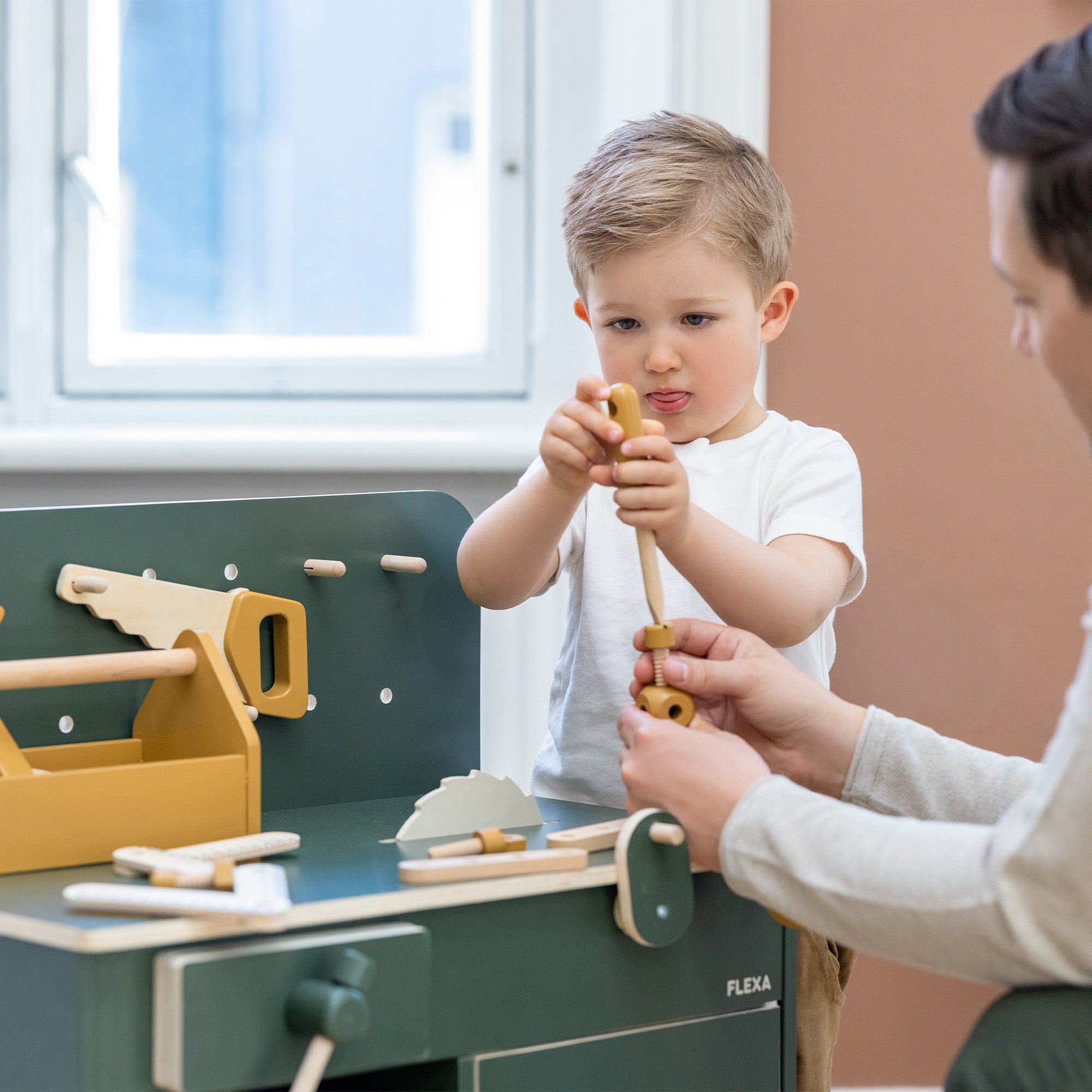For your child, playing and developing is the same thing. Your little one will engage in many different types of play throughout their childhood. Some games are the fruits of your child’s vivid imagination. Some games serve to test the rules of society. And some games might even seem aggressive. But all types of play help to develop your child – here’s how.
Highlights:
- From birth to about 2-years-old, children like to play alone or alongside others.
- At age three, children start to interact more with each other during playtime.
- 4-year-old-children are intentionally looking for playmates to go on adventures with.
-
Children learn different things from playing different types of games. For example:
- Constructive play teaches children to stay focused, think logically and creatively.
- Role play is a way to learn new words and gain experience with social norms.
- Rough-and-tumble play makes it clear what’s play fighting and what’s real fighting.
- Games with rules explain hard-to-grasp concepts such as luck and society’s rules.
From Solitary Play to Cooperative Play
From birth to about 2-years-old, your little one likes to play alone or alongside others. This is also called solitary play and parallel play. When your child turns 3-years-old, they start to interact more with others during playtime. And at age four, they begin to enjoy organised playtime with their friends.
“Four-year-old-children are curious and bravehearted. All by themselves, they start to look for playmates to go on adventures with. But they don’t choose just anybody. They carefully select their friends and can easily tell you who their best friends are,” says expert in children’s play, Joern Martin Steenhold.
4 Types of Play that Develop your Child
Joern Martin Steenhold has spent his entire life researching how children develop through play. He has found that children learn different things from playing different types of games. Here are four common types of play and how they contribute to your child’s development:
Constructive Play
When your child builds something by hand, it’s called constructive play. It could be building a tall tower of blocks, making a sandcastle, or moulding figures out of modelling wax. Constructive play teaches your child to stay focused, to think logically, but also to try new, creative ideas and explore the world on their own.
Role Play
Pretending to be somebody (or something) else is a game most children love. In the pretend universe, your child inherits all the talents, characteristics, and responsibilities of their new role. They speak new words for the first time, they get to see themselves in a new light, and they gain experience with social norms. Just imagine two children playing shopkeeper and customer.
Rough-and-Tumble Play
It can be hard for adults to understand this type of play. Children seem to be fighting, chasing, and teasing one another. But they are only pretending, and from rough-and-tumble play, they learn to regulate their emotions, get along with one another, and tell the difference between play fighting and real fighting.
Games with Rules
Even simple games like follow the leader, Simon says, or bingo only work if all players adhere to the same set of rules. When your little one engages in rule-based games, they can decide to quit the game anytime they want, but it’s fun to keep playing. “Will I win because of my skills or my luck?”

